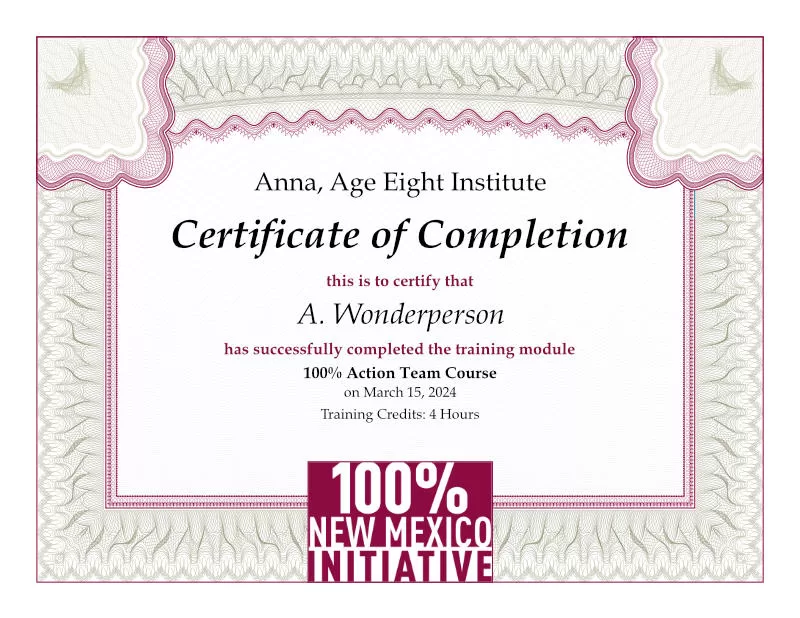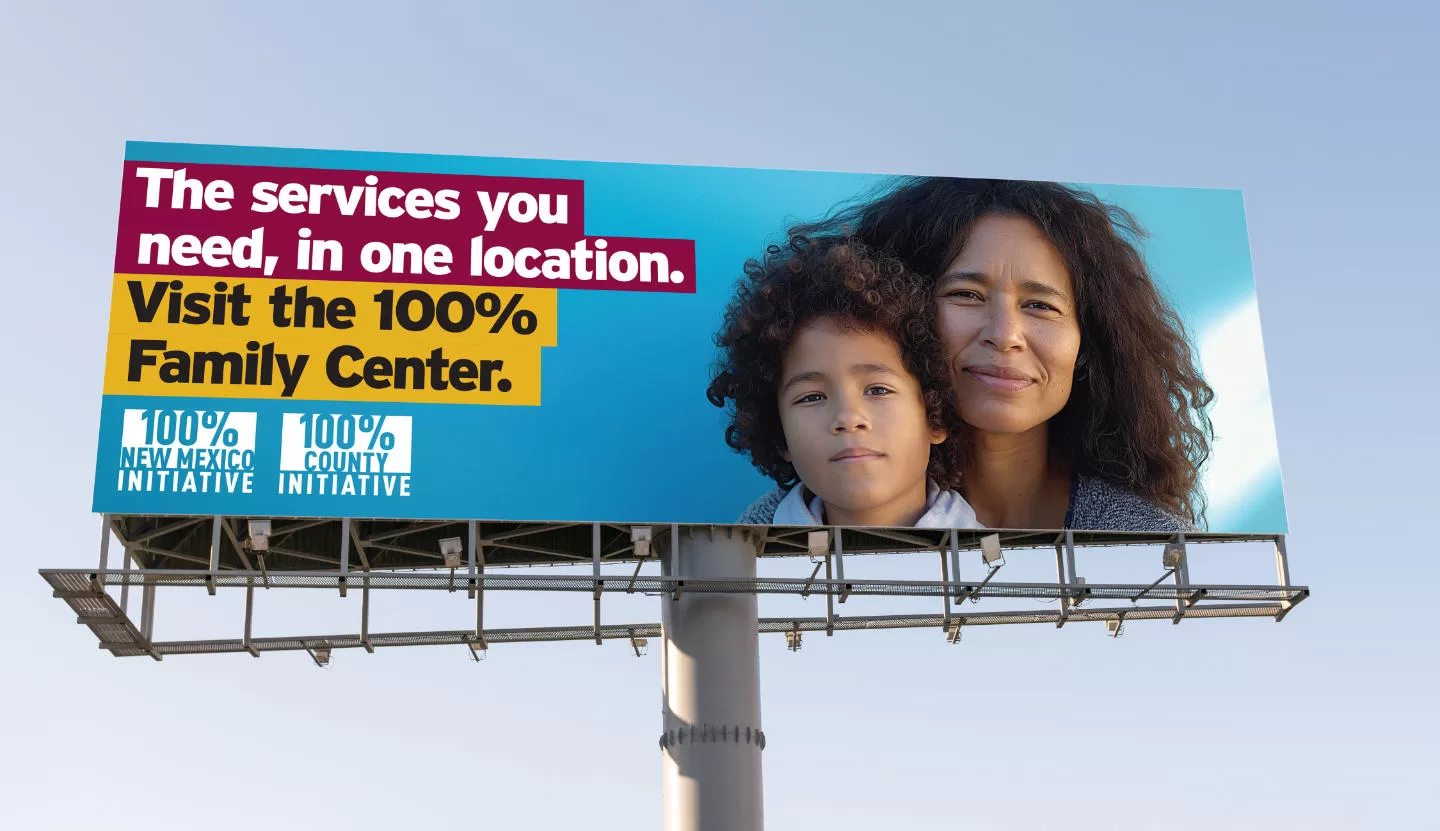An Infant, a Motel Room, and a Pile of Needles: How We Set Up a Vital Institution to Fail
Fixing child welfare to ensure the safety of our children can be done, but only by doing what’s never been tried in New Mexico.
Katherine Ortega Courtney, PhD and Dominic Cappello, PhD
Is child welfare unfixable? Going on almost a decade, every legislative session since we started writing Anna, Age Eight: The data-driven prevention of childhood trauma and maltreatment, there have been loud calls to “fix child welfare” and bills, funding, and new leadership that have failed to do so. On our fifth anniversary of the Anna, Age Eight Institute, we share excerpts from Anna, Age Eight’s “Chapter Five” on redesigning CYFD. It was the book, Anna, Age Eight—based on a child who fell through the cracks and became a child fatality—that started our Institute with its mission to ensure every child and family in New Mexico can survive and thrive.
Anna, Age Eight, Chapter Five: “AN INFANT, A MOTEL ROOM, AND A PILE OF NEEDLES: HOW WE SET UP A VITAL INSTITUTION TO FAIL”
Anna’s Story
We all make mistakes, but when Child Protective Services makes a mistake it can cost a child’s life. While very rare, child fatalities may be the direct cause of a staffer’s misjudgment. It could be the result of missing or incomplete files, a case being transferred to other staff without sufficient briefings, or just having a very distracted week with a million other pressing tasks to finish. As former employees of child welfare operations, we have collaborated with some of the noblest, most hard-working colleagues we’ve ever encountered. But we also know that cases like Anna’s, to varying degrees, happen all too frequently in all too many communities. And that troubles us deeply.
Getting CYFD, legislators, and the public on the same page
We don’t usually conceptualize child welfare work like this, but it’s really just a long series of procedures and processes that could be illustrated in a flow chart. Task A must be completed by Deadline B so that Person C can do Thing D. When the workload reaches a frantic level, three things happen: First, things slow down, putting what should be a temporary situation into long-term limbo. Second, the cases that are on fire get all the attention. Third, all those parents, whose reform efforts are the most expendable part of a daily grind that includes innocent kids and no-nonsense judges, are left to fend for themselves.
In the process of running a program for a protective services agency, we once set about creating simple workflow diagrams that attempted to spell out that system simply and visually. But it took months, because every time we interviewed a manager or field worker about the process, they had a different perception of how things actually worked. We eventually created a document that management signed off on, but only after 20 revisions. We’re aware that “getting the process right” may be the least interesting words ever committed to paper, but anything less represents a small but significant time tax on every hour of every day. And that tax is levied on staffers who have more important things to do, and, ultimately on the children and families who need someone to help them.
Creating a Data-Driven Process
And it probably goes without saying, but our favorite subject of using data to predict and prevent problems does not usually work its way into bureaucratic systems staffed by social workers with double the recommended caseload. That’s a shame, for one simple and clichéd reason: If you can’t measure it, you can’t manage it.
We once worked for a child welfare department in a bureau dedicated to research, assessment, and data, which put us in a great position to have all the information about where our biggest challenges were. We could filter data by geographical characteristics and demographics, and we could figure out which regional offices were lagging behind. We had the information that could inform reform, but did not have the authority to enact it.
A Software or People Problem?
There’s a basic computer software problem at many child welfare departments as well, because the systems used to track through this maze of reports are often so antiquated (many are using the same systems that were developed in 1997) that it’s difficult to call up information even after you’ve learned the overly complex rules.
The Solution
But how could a child welfare department begin to act more like their holistic comrades at the fire department? Our modest proposal is this: An in-house unit of a few staffers (staff size would depend on the size of the entire agency workforce and contracted partnering agencies) that is dedicated to a process called continuous quality improvement (CQI). Their mandate would be to use data to identify problems and solutions. They would be engaged in the four-step process of assessing, planning, acting and evaluating progress toward measurable and meaningful results. Their jobs, quite simply, would be to help everyone else do their jobs better, and to enlist elected officials and the general public in that cause.
The CQI unit would bring together the persistent positivity of a life coach, the discipline of an inspector general, and the passion of an evangelist. It would have carte blanche to look at every piece of paper and bit of data the department produced. It would have some degree of political independence, so as to avoid meddling from the people whose feathers it would need to ruffle. And critically, it would have some control over the department’s web site.
The tasks of this CQI unit could be broadly broken up into three key areas: assessment and evaluation, planning and action, and publicity/transparency. Let’s tackle all three.
Assessment and Evaluation
The mission here is to emulate the work of the inspectors general that monitor big federal agencies by comparing the stated goals of the department with the reality on the ground. The critiques mentioned above, of course, are a good place to start. The CQI unit is perfectly positioned to hop on the internal computer network and calculate the investigator-to-case ratio. It can do a sampling of incoming call logs and determine whether they’re going to the right place and if any are falling through the cracks. It can take a close look at the technology the department uses, and whether it causes minimal or unacceptable levels of friction where productivity is concerned. It can evaluate staff morale, a not insignificant factor in any organization, much less one dedicated to rushing toward human suffering. And it can conduct performance audits of the foster parent recruitment system, testing response times and soliciting feedback from parents on their user experience. It will take note of how many kids are repeatedly entering foster homes as opposed to less desirable group homes.
Those are the obvious areas to take a look at, but as an in-house unit, the CQI team will also be in a position to keep an ear to the ground, listening for communication breakdowns within the department, budgetary problems, and whatever else it picks up in its process of assessing, planning, acting, and evaluating.
Planning and Action
We don’t envision this unit as a rock-throwing, finger-pointing group. A key part of the mission would be training employees in the CQI process itself. As we’ve been saying over and over again in this book, every single job ever devised can be improved with the deliberate application of the basic enlightenment principles embedded in CQI.
We’ve actually run programs to this effect in child welfare departments – they were designed to evaluate every corner of the agency. And while holding courses about the nebulous topic of “how you can do your jobs better” may seem like a disorganized way to get to the point, you’d be surprised at how quickly participants zero in on whatever their biggest challenge happens to be. We just teach them how to do all that zeroing in through planning and research of best practices, and how to use good information and good arguments to affect good changes. In fact, we call participants “Data Leaders.”
For the CQI units, we envision a kind of ongoing Data Leaders Program with an emphasis on information analysis, research, and communication with colleagues, partners, and the public. All over the United States, and even the world, talented people are coming up with great new ideas for how to help kids and their families. Efforts to seek out those ideas and implement them are always a bit scattershot, but the CQI unit will institutionalize the never-ending struggle to get better, by alerting administrators to problems and training staffers directly to address them.
By the way, we see no reason why this research on best practices could not at the same time come up with strategies that other agencies could use to help the child welfare cause. It could not, of course, get involved in political campaigns to, for example, raise this or that tax to fund universal preschool. It could not advocate for the upping of payments to behavioral health providers who take Medicaid. But it could make sure that everyone knew exactly what those reforms would do for children if enacted.
Publicity and Transparency
Assessment, Planning, Action, and Evaluation are great things, to be sure, but they are primarily internal functions, and depend on cooperation from the old guard. But rest assured that the mission of the CQI unit does not depend entirely on asking nicely. With publicity, and the sort of partnerships with members of the media commonly cultivated by inspectors general at the federal level, the unit can really put some firepower into reforms, all while drawing productive attention to the department itself. Rather than staying out of the news, the CQI Unit would seek to publicize what’s working and how partners and the public can collaborate to strengthen the lives of every child.
This is where some degree of control over the agency’s website comes into critical play. In the course of its normal day, the CQI unit will be harvesting a great deal of data, and they need to put that information (while protecting confidential personal data) on the web in a visually compelling way that’s easy for non-professionals to understand. How many kids are in custody right now, broken down by zip code, county or region? What’s the investigator caseload and workload? What’s the average duration of a case? How many kids are at risk for aging out of the system without a permanent home? What’s the breakdown between kids in foster care and kids in group homes? And what do the trends look like over the last year, or last five years, or in other states?
We need all these numbers in one place, with lots of colorful charts and graphs and plain-language explainers of technical terms. It should be updated every week, if not every day. It’s all public information, after all, and with a little persistence you yourself could acquire it and put up the data on a website you launch yourself. But given how hard that would be, and that we live in an era where newspapers increasingly don’t have the staff to watch the government, it is the job of the government to show you what it’s doing.
Think of this array of numbers as a dashboard readout—a quick check of vital signs. It’s the equivalent of driving around town looking at potholes and verifying the on-time performance of buses to assess transportation policy, except it’s right there on the web. It won’t tell you everything—after all, you can’t check the fluids in the buses or make sure road crews are following best asphalt pouring practices—but it’s a good temperature check that’s always there and will never get buried on page A16 of one newspaper on one day and then be forgotten.
This sort of preemptive transparency is hardly a revolutionary thought, of course. Governments of all kinds routinely disclose campaign finance reports online without anybody asking for them. In New Mexico, the mayor of Albuquerque posted his monthly credit card statement on the city’s website. And there’s also the National Debt Clock, a dramatic real-time illustration of our national debt and your particular share of it.
We need something like that for child welfare. A centralized clearinghouse with basic information is the sort of thing that attracts attention from journalists and politicians and members of the public looking for something to tweet. It turns an opaque and forgotten part of the government into something that everyone can see and touch. Agencies under that level of scrutiny tend to perform better. But if the administrators dislike that level of pressure, they may appreciate the flip side: Draconian budget cuts are harder to pull off when lawmakers and the general public actually know what you do all day and appreciate it. Those beloved firefighters learned that lesson a long time ago.
But this website would be more than just a set of numbers paired with pretty charts and graphs. During the four-step process of CQI, the unit would produce lots of reports on the agency’s challenges and what can be done about them. They would also produce quite a bit of original research on what’s being done elsewhere and how that compares and contrasts to the local jurisdiction. All of that should also be posted on the web site as well. The reports may need to be dry and long, aimed primarily at administrators and lawmakers, but a quick executive summary for public and media consumption could be added easily. The more people who know what’s going on under the hood, the better the engine will run.
Not Easy. Just Vital.
We don’t pretend that implementing a CQI unit would be easy. While state government is not the military, it is built on a chain-of-command model. If you have a problem or an innovative idea, you’re supposed to go to your direct supervisor for guidance, not skip over a level of management, and you’re certainly not supposed to put random internal information on the internet, even if it’s public. Such organizations are resistant to change, and that’s before we run into all the individuals who are just riding it out for a couple of years till retirement, or don’t want to put in the extra work reform would require, or who just woke up on the wrong side of the bed one day twenty years ago and decided to make it a habit.
But if an idea like a fully-staffed and tech-empowered CQI unit can get through a legislature, it may well crack the code that the fire safety people figured out a long time ago. The folks behind that movement fought fires aggressively, but they also tried to prevent fires on many different fronts, including installing a fire safety research organization into the permanent regulatory structure. In other words, they planted a CQI unit into the equation, let it do its thing, and the fact that you probably worry much less about fire than your great-grandparents did speaks for itself. That’s what we want for child welfare.
When child welfare is properly funded, correctly staffed to meet best practice guidelines, expertly infused with state-of-the-art technology, and allowed to use data to inform all actions, we will at long last have a vital agency of authority in a place to take the lead in preventing all forms of adverse childhood experiences and trauma.
Going Upstream
As we end this article, which is a call to action first made in 2017, we end with some insights from a later chapter titled “Why our zip code should not determine our destiny.” This chapter explains how child welfare alone cannot be expected to prevent child maltreatment. This is where we set up child welfare to fail. Children enter the system, for the most part, because of neglect by caring parents who can’t access the services for surviving and thriving. Child abuse is a small part of the caseload. Parents and all adult caregivers may struggle to access behavioral health care to address their untreated trauma, substance use disorders, and a long history of untreated mental health and medical conditions. Services that remain out of reach can include not only healthcare but food security programs, housing security programs, and transportation to vital services (all described in detail in our book 100% Community: Ensuring 10 vital services for surviving and thriving.)
Our point made in a 650-page blueprint for change guiding our 100% New Mexico initiative in 18 counties is that CYFD alone can not be responsible for transforming the adverse social determinants of health (lack of services) into positive determinants (fully accessible services). That is the job of every family-focused state agency, along with all levels of government, including city, county, and school governmental bodies and programs. While this may sound like a Herculean task–one often described as “far too ambitious”, it’s the mission our Institute has taken on.
And so, to fix child welfare two things must happen.
- Commit to a data-driven process within CYFD on every level in every program, facilitated by leaders trained in continuous quality improvement to assess, plan, act, and evaluate. This process, including research on best practices in child welfare from across the nation, will address most challenges within the department.
- Commit all state agencies to ensuring ten vital services for all families, with the departments focused on early childhood, health and education in the lead. The social determinants of health, those services that determine our children’s safety, must be accessible to every child, student, and family. One step in this direction is creating a statewide network of 100% Family Center: One Stop Service Hubs which can link families to services onsite, online or through navigators. This Hub would also be staffed with CQI specialists focused on public and private sector partnerships and infusion of technology to increase and improve services in each county.
Anna’s story can inspire us
What we proposed many years ago in Anna, Age Eight and what we propose today hasn’t changed. What may have changed is the political will to finally address the root causes of child maltreatment along with the real reasons child welfare is set up to fail our children and families. We know the solutions and only require the political will to implement them. We stand ready to support the process.
Did you know? Our transformational 100% New Mexico initiative is guided by web-based, self-paced courses provided free to all New Mexicans.

Don’t miss a blog post! Get notified!
The 100% New Mexico initiative is a program of the Anna, Age Eight Institute at New Mexico State University, College of Agricultural, Consumer and Environmental Sciences, Cooperative Extension Service. Contact: annaageeight@nmsu.edu or visit annaageeight.nmsu.edu to learn more.








